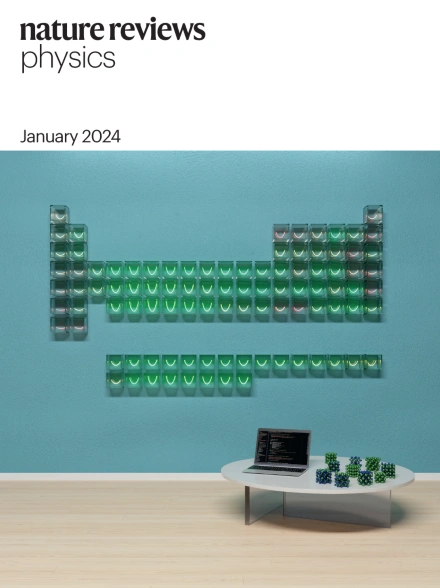固体-流体表面自由能和张力的原子计算
IF 39.5
1区 物理与天体物理
Q1 PHYSICS, APPLIED
引用次数: 0
摘要
本文综述了使用原子模拟计算固体-流体表面张力的方法,这是理解和控制界面物理性质的关键参数。准确计算和理解这些性质在应用中越来越重要,特别是在表面效应占主导地位的密闭流体系统中。传统的方法,如接触角测量,威廉板法,和固定式滴法往往不能直接测量固液表面张力。相比之下,分子模拟可以直接提取该参数,从而更详细地了解其在纳米尺度上的行为。这篇综述强调了与固体-流体界面相关的挑战,特别是它们的各向异性,并讨论了计算技术,如切割方法、微扰方法和毛细波理论。本文综述了计算固体-流体表面自由能和张力的原子方法,强调了各向异性带来的挑战。它讨论了模拟技术和方法的发展,并强调需要改进的方法来解决复杂的,受限的或无序的系统。本文章由计算机程序翻译,如有差异,请以英文原文为准。

Atomistic computing of the solid–fluid surface free energy and tension
This Review surveys methods that use atomistic simulations to compute solid–fluid surface tension, a key parameter for understanding and controlling physical properties at interfaces. Accurate calculation and understanding of these properties are increasingly important in applications, especially in confined-fluid systems in which surface effects dominate over bulk properties. Traditional approaches such as contact angle measurements, the Wilhelmy plate method, and sessile drop methods often fall short in directly measuring solid–liquid surface tension. By contrast, molecular simulations allow the direct extraction of this parameter, offering a more detailed insight into its behaviour at the nanoscale. The Review emphasizes the challenges associated with solid–fluid interfaces, particularly their anisotropic nature, and discusses computational techniques such as the cleaving method, perturbation approaches and capillary wave theory. This article reviews atomistic methods for computing solid–fluid surface free energy and tension, highlighting challenges from anisotropy. It discusses simulation techniques and methodological developments, and emphasizes the need for improved methods to address complex, confined or disordered systems.
求助全文
通过发布文献求助,成功后即可免费获取论文全文。
去求助
来源期刊

Nature Reviews Physics
Multiple-
CiteScore
47.80
自引率
0.50%
发文量
122
期刊介绍:
Nature Reviews Physics is an online-only reviews journal, part of the Nature Reviews portfolio of journals. It publishes high-quality technical reference, review, and commentary articles in all areas of fundamental and applied physics. The journal offers a range of content types, including Reviews, Perspectives, Roadmaps, Technical Reviews, Expert Recommendations, Comments, Editorials, Research Highlights, Features, and News & Views, which cover significant advances in the field and topical issues. Nature Reviews Physics is published monthly from January 2019 and does not have external, academic editors. Instead, all editorial decisions are made by a dedicated team of full-time professional editors.
 求助内容:
求助内容: 应助结果提醒方式:
应助结果提醒方式:


